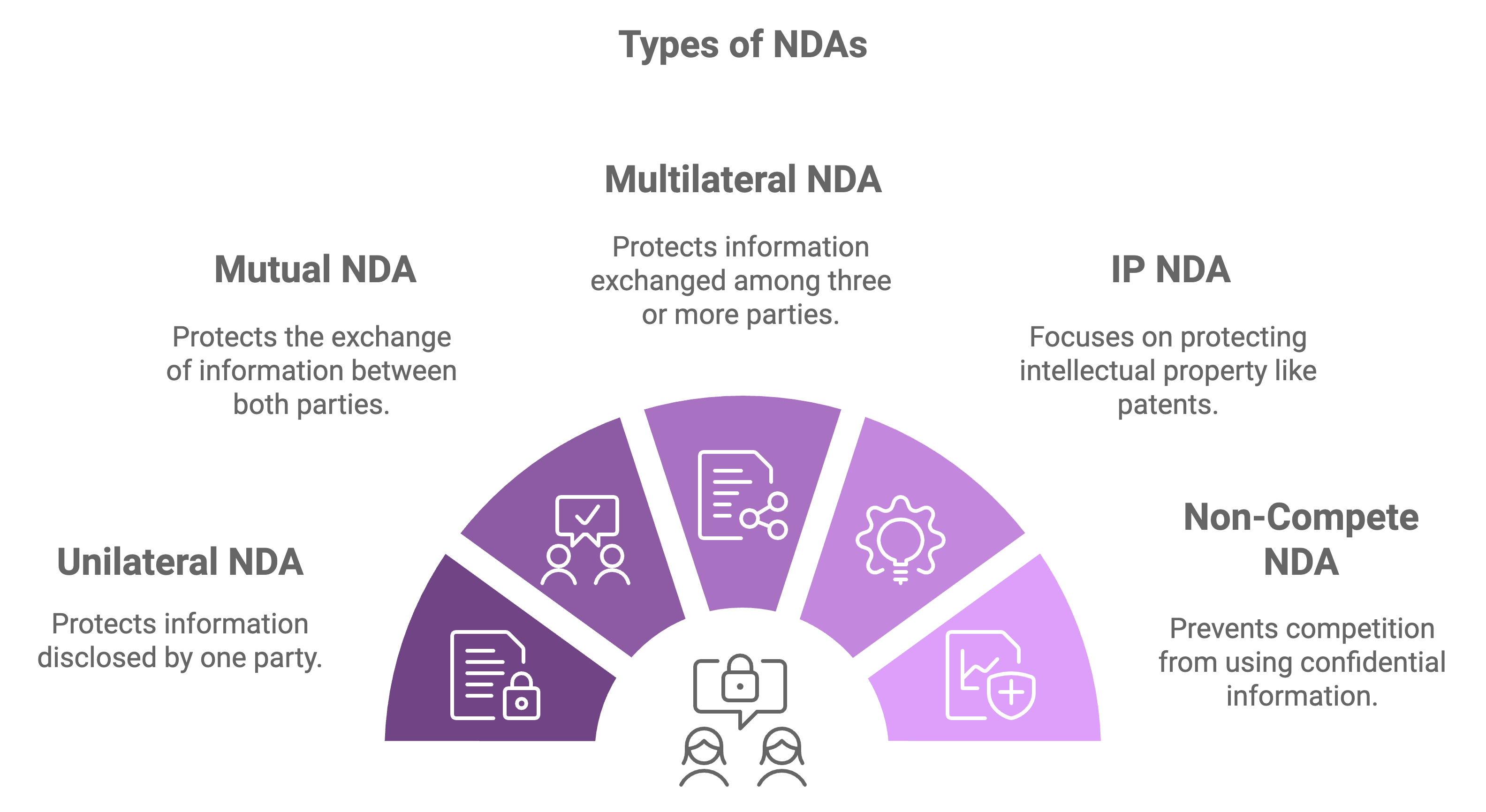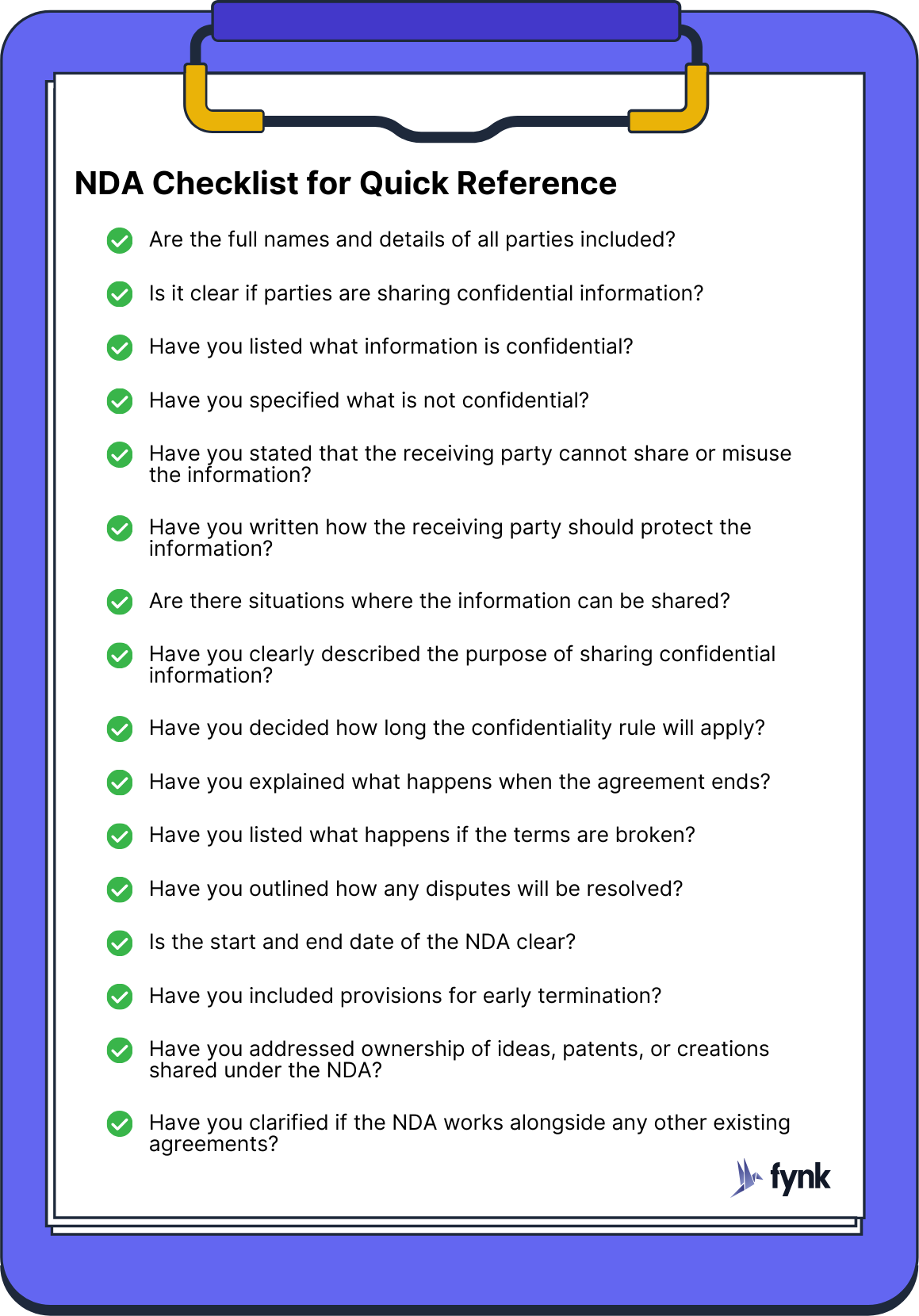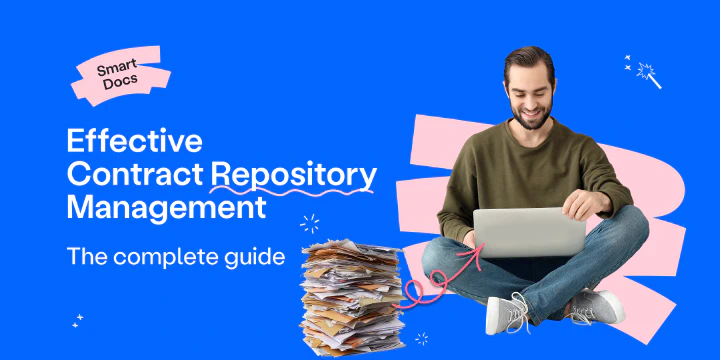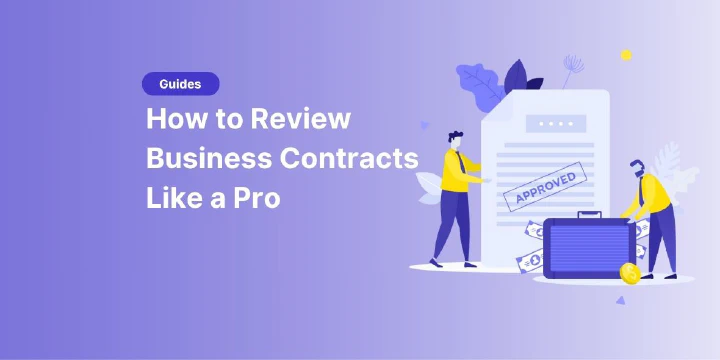How to Write a Great NDA? + Checklist
Want to create a great Non-Disclosure Agreement (NDA) to protect your valuable data? Writing a comprehensive NDA requires careful consideration; from choosing between unilateral and mutual NDAs to ensuring all necessary clauses are included. In this guide, we walk you through seven easy but necessary steps to create a powerful NDA. We also included an NDA checklist so that you can check if you’ve covered all the roles, obligations, exceptions, and other important details.

No time to write an NDA draft from scratch? No worries, our Mutual NDA template is written carefully and includes all the necessary legal details and clauses. Give it a try!
What type of NDA do you Need?
Before you jump into writing an NDA, choose what type of NDA you need. There are several options to choose from depending on the purpose, context, or activity you’re trying to protect:


- Unilateral (One-Way) NDA: Protects information disclosed by one party.
- Mutual (Two-Way) NDA: Protects the exchange of information between both parties.
- Multilateral NDA: Protects information exchanged among three or more parties.
- Intellectual Property (IP) NDA: Focuses on protecting IP, such as patents or proprietary methods.
- Non-Compete NDA: Prevents competition from the receiving party using confidential information.
How To Draft a Good NDA?
Step 1: Write a Description of NDA and Parties
When creating a Non-Disclosure Agreement (NDA), the first step is to write a clear description of the parties and what the NDA is protecting.
For each party, you need the following details:
- Full legal names
- Registered business names (if there’s any)
- Legal status in NDA (individual or on behalf of a business)
- Addresses (company or individual)
- Contact information like phone numbers or emails
- Roles in the NDA: Specify whether each party is a disclosing party, receiving party, or both (in the case of a mutual NDA). Typically, in an NDA there are two main roles:
- The disclosing party: who is sharing confidential information, and
- The receiving party: who is obligated to keep that information private.
❗ Important: If you’re writing mutual or multilateral NDAs, all parties have both disclosing and receiving roles.
Also, it’s a good idea to briefly mention what the purpose of the NDA is, what it tries to protect, the governing law clause, and important dates. Altogether, the section may look like this:
“Non-Disclosure Agreement (this “Agreement”) is entered into between Party A, a [Legal Status] incorporated and existing under the laws of [Country/State], having its registered office at [Address], and registered with the commercial register of [Location of Registration] under the company identification number [Company ID Number] (the “Disclosing Party”), and Party B (the “Recipient”) as of [Effective Date] (the “Effective Date”), to protect the confidentiality of certain confidential information of Party A to be disclosed to Party B solely for use in evaluating, pursuing and, if applicable, consummating a business relationship with Party A (the “Permitted Use”).
Step 2: Clearly Define Confidential Information
This is the most important part of drafting a non-disclosure agreement. Here, you explain what you mean by the term “Confidential Information.” So, not only do you have to be super detailed about the information you want to protect, but also, you should use very clear, direct and precise wordings.
Why? Because vague or broad definitions lead to confusion, leave your important information unprotected, and cause disputes down the line. So, make sure you don’t write any part of this section in an open-to-interpretation way.
First, make a list of all sensitive information you want to protect, they could be:
- Trade secrets,
- financial data,
- business strategies,
- customer lists,
- proprietary software,
Or anything that is vital to your business or personal interest.
Here are a bad and good example of writing this section:
❌ Bad Example
“Confidential Information includes all business-related data and any information that is proprietary to either party.”
✅ Good Example
For purposes of this Non-Disclosure Agreement, “Confidential Information” shall be defined as non-public, confidential and/or proprietary information disclosed by the Company or its affiliates to the Counterparty, including, but not limited to: (a) information, whether or not marked confidential, relating to projects, investigations, technical specifications, databases, business plans, designs, products, financial statements, forecasts, pricing, know-how, and trade secrets; or (b) any other information marked as confidential or, if not disclosed in writing, identified as confidential at the time of disclosure; or (c) information that by its nature and content is reasonably distinguishable as the confidential and proprietary information of the Company given the nature of the information and circumstances of disclosure, but is not specifically marked or orally designated as confidential. Confidential Information includes original information supplied by the Company to Counterparty in any medium, as well as all copies in paper, electronic, or other medium.
Step 3: Add Obligations of Parties
Once you’ve defined the confidential information, you should also write how the parties should treat and handle them. This section in NDAs is usually called “Obligations of Parties.” For example, the recipient needs to keep it secure, do not share it to unauthorized third parties, and only use it for specific purposes mentioned in the agreement.
You can include different clauses in this section based on your needs:
- If you want the receiving party to keep the information confidential and not share it with unauthorized third parties, use the Non-Disclosure Clause.
- If you want the information only used for a specific purpose, use the Non-Use Clause.
- If you want to set reasonable safeguards for specific assets of your company, use the Confidentiality of Documents and Information Clause.
- If you want to return or destroy all confidential information when the agreement ends, use the Return or Destruction Clause.
- If you want to prevent the receiving party from reverse-engineering or deconstructing your confidential data, use the No Reverse Engineering Clause.
Step 4: Specify Any Exceptions
When creating an NDA, it may seem unnecessary to include information that is NOT confidential. But it is actually helpful for several reasons. In some cases, it may be impractical or unnecessary to keep all information confidential. For example, if the information is already publicly available the receiving party is not going to be penalized for something that is not protected under the terms of the NDA.
To exclude information from the agreement, write an exclusions from confidential information clause and mention the specifics that you have in mind. It could look like something like this:
The obligations of confidentiality set forth in this Agreement shall not apply to any information that: (i) was already known to the Receiving Party at the time of disclosure; (ii) becomes publicly available through no fault of the Receiving Party; (iii) is independently developed by the Receiving Party without reference to or reliance on the Confidential Information; or (iv) is disclosed with the prior written consent of the Disclosing Party.”
Step 5: Add the Purpose of the Disclosure
In this step of writing the NDA, you explain why the confidential information is being shared and specify the exact purposes for which it can be used. Writing this section is important because you further protect the disclosed information from being misused or shared and applied outside the scope of the NDA.
For example, you might include a clause like:
“The Confidential Information provided under this Agreement shall be used solely for the purpose of evaluating a potential business relationship between the parties (the ‘Permitted Use’). Any use of the Confidential Information for other purposes, including but not limited to personal gain or sharing with third parties, is strictly prohibited.”
Step 6: Define Duration of Confidentiality
The duration of the confidentiality clause explains in detail how long the parties are supposed to keep and protect the receiving information confidential. The important thing here to consider is that, if the NDA is related to another contract, the duration of confidentiality can be extensive. For example, in employment contract NDAs, it’s common for confidentiality obligations to continue even after contract termination.
Trouble determining the duration of confidentiality? Well, depending on the nature of your business or project, this period varies, but here are the typical confidentiality durations for different industries:
- 1 to 3 years: Consulting & Marketing, Entertainment, Retail & Consumer Goods, Education & Research.
- 2 to 5 years: Technology & Software, Finance & Investment, Manufacturing, Real Estate.
- 3 to 5 years: Pharmaceuticals & Biotechnology (or until the patent expires)
- Indefinite: Government & Defense
Step 7: Include Consequences of Breach and Legal Remedies
Last but not least, you need to mention what will happen if there is a breach of confidentiality, how the parties should proceed, and what the legal remedies will be.
When writing this section of your NDA, consider adding the following clauses:
- Consequence of Breach: Write the consequences if a party breaches the confidentiality of the agreement. It can be potential legal action, damages, and injunctions.
- Indemnity Clause: mention who should be held responsible for any damages caused by a breach.
- Legal Fees and Costs: If any legal dispute happens due to the breach, this clause clarifies who should pay for the legal costs.
- Remedies for Breach: Detail the legal remedies available to the non-breaching party, such as seeking financial compensation or stopping the disclosure of information.


How to Sign an NDA?
Your NDA is not legally binding unless it’s properly signed by both parties. Signing an NDA is easy, especially with electronic signatures. Digital signatures are legally valid in most places, so you can sign the agreement online without needing to print anything. Using e-signature tools, both parties can sign the NDA remotely, which makes the process faster and more convenient. After signing, everyone gets a copy for their records.
Sign
any
Document in Less than
a Minute.
NDA Checklist for Quick Reference


- Are the full names and details of all parties included?
- Is it clear if parties are sharing confidential information?
- Have you listed what information is confidential (e.g., documents, data)?
- Have you specified what is not confidential (e.g., public knowledge)?
- Have you stated that the receiving party cannot share or misuse the information?
- Have you written how the receiving party should protect the information?
- Are there situations where the information can be shared (e.g., by law or if already known)?
- Have you clearly described the purpose of sharing confidential information?
- Have you decided how long the confidentiality rule will apply (e.g., 1-3 years)?
- Have you explained what happens when the agreement ends?
- Have you listed what happens if the terms are broken (e.g., penalties, legal action)?
- Have you outlined how any disputes will be resolved?
- Is the start and end date of the NDA clear?
- Have you included provisions for early termination?
- Have you addressed ownership of ideas, patents, or creations shared under the NDA?
- Have you clarified if the NDA works alongside any other existing agreements?
Conclusion
By following the right steps, drafting an NDA becomes a straightforward process. If you want to save time drafting your document, try Fynk’s ready-to-use and customizable NDA template. The only thing you have to do is populate it with your information. You can also use fynk to securely share, sign, and track the NDA’s key dates, to make sure everything is handled efficiently and legally.
Searching for a contract management solution?
Find out how fynk can help you close deals faster and simplify your eSigning process – request a demo to see it in action.
FAQs
- What should I look for before signing an NDA?
- Before signing an NDA, ensure that it clearly defines the scope of confidentiality, includes the roles of each party, and specifies the duration of the confidentiality obligation. Additionally, check for exclusions, remedies for breach, and whether it aligns with any existing contracts.
- How long is my NDA applicable?
- The duration of an NDA depends on the agreement and the nature of the confidential information. Typically, the confidentiality obligations last for 1 to 5 years, but in some cases, it may last indefinitely, especially in situations involving trade secrets or proprietary information.
- Does an NDA cover illegal activity?
- No, an NDA cannot protect illegal activity. Any confidential information related to illegal activities or actions that go against the law are not protected by the agreement and may be disclosed to authorities if necessary.
- Can a minor sign an NDA?
- Legally, minors (under the age of 18 in most jurisdictions) generally cannot enter into a contract, including an NDA, without parental or guardian consent. However, in certain cases, a minor may be able to sign an NDA if it is deemed in their best interest and approved by a responsible adult.
- What is the purpose of an NDA?
- The purpose of an NDA is to protect sensitive or proprietary information shared between parties. It ensures that the receiving party does not disclose or misuse the information, preserving confidentiality during business negotiations, collaborations, or employment relationships.
- Can an NDA be modified or terminated early?
- Yes, an NDA can be modified or terminated early if both parties agree to the changes. Any amendments or early termination should be documented in writing and signed by all parties involved to maintain legal clarity.
- What happens if I accidentally breach an NDA?
- If you accidentally breach an NDA, it is important to notify the disclosing party immediately. The consequences may vary depending on the terms outlined in the NDA, including potential legal action or financial penalties. It's important to mitigate the damage as soon as possible.
- Do NDAs apply globally, or are they jurisdiction-specific?
- NDAs are typically jurisdiction-specific, meaning the laws of the country or state where the agreement was signed will govern the terms. However, global NDAs can include provisions that specify which jurisdiction's laws will apply in case of a dispute.
Please keep in mind that none of the content on our blog should be considered legal advice. We understand the complexities and nuances of legal matters, and as much as we strive to ensure our information is accurate and useful, it cannot replace the personalized advice of a qualified legal professional.
Table of contents
Want product news and updates? Sign up for our newsletter.
Other posts in Contract-Management

SaaS contract management explained for buyers and vendors
If you work in SaaS, you know how quickly contracts can pile up. Each one comes with its own terms, renewals, …

The Complete Guide to Effective Contract Repository Management
A contract repository is where every agreement your business depends on finally finds its place. No cluttered …

How to Review Business Contracts Like a Pro in 2025
When it comes to business contracts, what you don’t catch can hurt you. That’s why reviewing a business …
Contracts can be enjoyable. Get started with fynk today.
Companies using fynk's contract management software get work done faster than ever before. Ready to give valuable time back to your team?
Schedule demo


